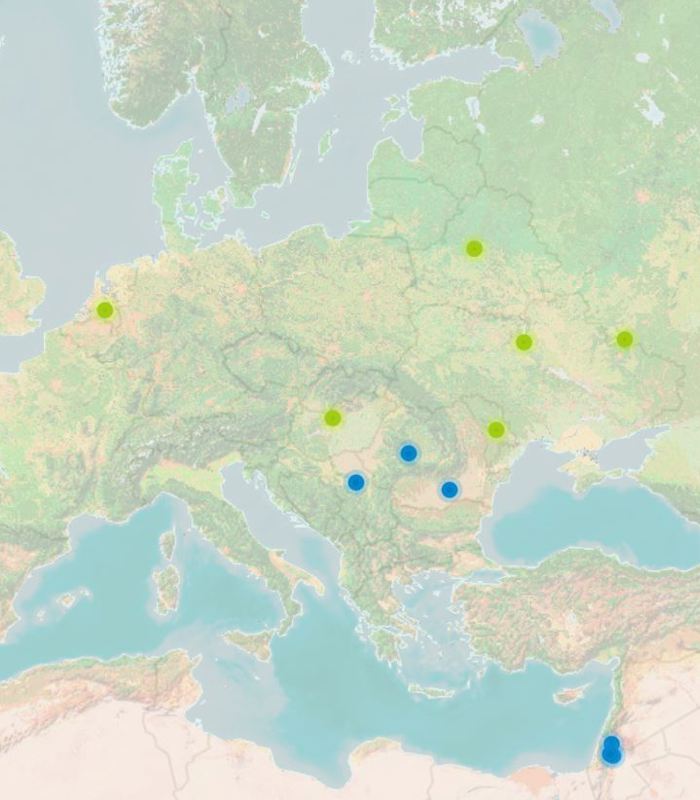Visualising where in the world HAS University of Applied Sciences is active with international projects, and providing information about the projects themselves; that was the wish of the HAS International Projects (HIP) team when they asked Geert Offenberg, student of Applied Geo-Information Science, to design an interactive map for them. Geert made this wish a reality, and the map has been so well received that a second one was requested, this time providing an overview of HAS projects in the Southwest Delta region in the Netherlands.
Marjet Overmars works for both the HIP team and Southwest Delta team at HAS University of Applied Sciences, and is closely involved in the development of both maps. She says that HIP has built up an interesting portfolio in its seven-year existence as a central coordination point for international projects. “Colleagues, students and partners don't always know which projects are ongoing or have been completed, so it was time to find a way to make this clear. We hope the interactive map will provide them with an overview, and at the same time encourage them to become internationally active themselves. For this reason, we’re linking projects to people in the map, and users can make contacts.”
Assign a student
Team HIP consciously chose to assign a student to design the card. Marjet: “Applied Geo-Information Science provides us with a fantastic study programme in-house, with a wealth of expertise in this area. We wanted to give a student the opportunity to work on this project and gain some experience. Students also have a fresh perspective, and we wanted to exploit their ability to think beyond the box.” Student Geert Offenberg responded to their call. “I thought it would be a great way to practice visualising and providing insight into complex data.”
Which system?
Geert received an Excel file with an overview of the projects. He linked each project to a location, then created a map of the results. “Deciding which system to use and the type of map in particular took a lot of time,” he explains. “There are so many options. I checked out what was available, experimented, and ultimately made a choice. An interactive map has several advantages over a 'flat' map. For example, you don’t have to add all the projects at once, but can do so and edit them one at a time. This means you can always keep the map up-to-date. In addition, you can process much more information in an interactive map without this detracting from the clarity of the overview, because the user can interact with the map (zoom in, move, etc.). Users can click and look to their heart's content, which makes the map attractive.”
Content and design
The map has already been online for a few months, and the reactions are positive. “We get compliments, but not just about the content,” says Marjet. “People appreciate the design as well. It’s an accessible, attractive way of presenting data.” The map went so well, that Marjet suggested the Southwest Delta team ask Geert to make another map, this time of all the projects in the Southwest Delta region. HAS University of Applied Sciences has been active in this area since 2015, during which time it has developed many activities.
Accessible and usable
This presented a whole new challenge for Geert; whereas HIP had involved about 40 projects, the Southwest Delta both involved many more projects, 952 to be exact, and in different forms: 35 minor projects, 820 internship projects, and 97 thesis projects. “That meant there was a lot more information to process, but I succeeded. Just like the HIP map, this map is now accessible and easy to use, because you can select and click as well as filter, for example by lecturer, study or period.” Useful for staff members and students, but also for partners in the region. Marjet: “They gain insight into how HAS activities are unfolding, and how we’re helping the region advance.”


